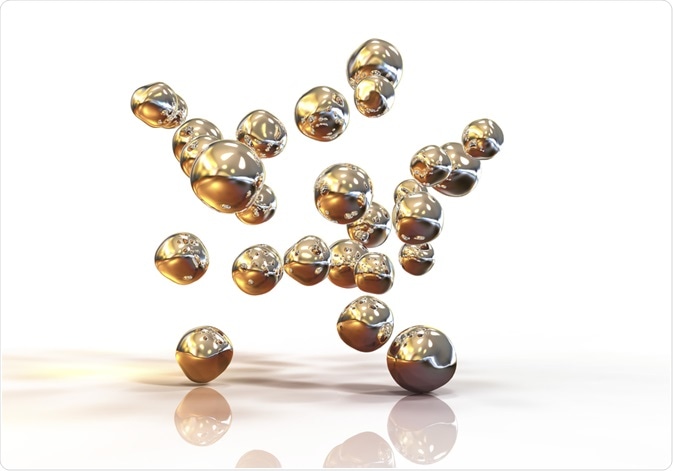Gold nanoparticles have found a useful application in the field of Raman spectroscopy, where they can increase Raman signal intensity.
 Kateryna Kon | Shutterstock
Kateryna Kon | Shutterstock
What is Raman spectroscopy?
Raman spectroscopy is a method that is based on inelastic scattering of light where the frequency of the photons may change depending on how it interacts with the sample. The light in these cases is usually monochromatic light or light of a single origin.
The re-emitted light is of a longer or a shorter wavelength compared to the original wavelength, and this is termed as the Raman effect. Using the information derived from this shift, several parameters regarding the vibrational, rotational, and other frequencies of the molecules can be inferred.
This method of spectroscopy can be performed on solid, liquid, or gaseous samples. The laser beam is an oscillating electromagnetic field which – upon interaction with the molecules – can deform it. Due to this deformation, the molecules start to vibrate with a specific frequency, which is subsequently measured.
The effect of gold nanoparticles on Raman spectroscopy
Gold nanoparticles can enhance Raman intensity; however, the enhancement effect produced by the nanoparticles can vary based on the particle size and environment. ecent studies propose that the effect of nanoparticles on Raman spectroscopy is due to local "hotspots" of surface roughness that stem from between metallic nanoparticles or between nanoparticles and the metal surface.
Shape (curvature) is important
Another method to increase the Raman effect is by increasing the local curvature of nanomaterials. In case of changing the shape of nanoparticles to nanotriangles, the field strength could be increased by 10-100 times. Recently star-shaped gold nanoparticles have been generated that have sharp edges and tips. They are called as ‘nanostars', and they are highly sensitive to changes in the dielectric environment.
Other studies have also found similar results for gold nanoparticles that have sharp edges. In a study that aimed to compare different shapes of nanoparticles, it was found that the Surface-Enhanced Raman Scattering effect increases in the following manner: nanospheres < nanosphere aggregates < nanotriangles < nanostars. This shows that the size and shape of nanoparticles can determine the efficiency of Raman spectroscopy.
Size matters
In one other study, the researchers tried to evaluate the role of the size of gold nanoparticles on the Raman spectroscopy. To do this, gold nanoparticles that ranged in size from 17-80 nanometers were made. It was found that for the same number of nanoparticles, the Raman effect can be enhanced based on their size.
Furthermore, for a specific concentration of gold nanoparticles, it was shown that the maximum enhancement of the Raman effect can be achieved when the size of the nanoparticle was around 50 nanometers. The authors further suggested that these results could also potentially be applied to other adsorbates, such as 4-aminothiophenol and 4-nitrothiophenol.
Monolayers could be useful
One study showed that larger gold particles (greater than 20 nm) could enhance the Raman intensity when assembled into ordered monolayers. In this study, nanoparticles were self-assembled into three-phase structures that contained nanoparticles ranging from 13 to 90 nanometers. Such self-assembly of larger gold nanoparticles has the propensity to increase the Raman effect.